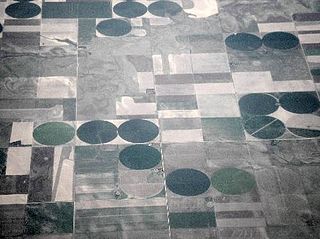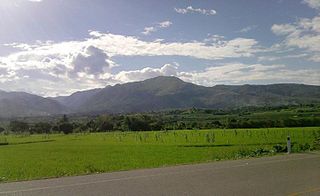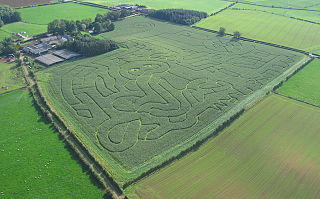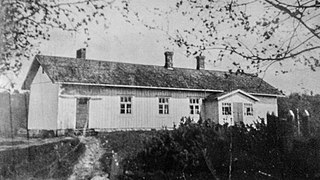 W
WA farm is an area of land that is devoted primarily to agricultural processes with the primary objective of producing food and other crops; it is the basic facility in food production. The name is used for specialised units such as arable farms, vegetable farms, fruit farms, dairy, pig and poultry farms, and land used for the production of natural fibres, biofuel and other commodities. It includes ranches, feedlots, orchards, plantations and estates, smallholdings and hobby farms, and includes the farmhouse and agricultural buildings as well as the land. In modern times the term has been extended so as to include such industrial operations as wind farms and fish farms, both of which can operate on land or sea.
 W
WThe food industry is a complex, global network of diverse businesses that supplies most of the food consumed by the world's population. The term food industries covers a series of industrial activities directed at the production, distribution, processing, conversion, preparation, preservation, transport, certification and packaging of foodstuffs. The food industry today has become highly diversified, with manufacturing ranging from small, traditional, family-run activities that are highly labor-intensive, to large, capital-intensive and highly mechanized industrial processes. Many food industries depend almost entirely on local agriculture produce or fishing.
 W
WA barn fire, also known as a farm fire or stable fire, occurs when a barn or stable at a farm for the keeping of livestock catches fire, and is partially or wholly destroyed. This can lead to the death of animals, release of toxic fumes, and financial and material damage for insurers, owners, employees and nearby residents.
 W
WA barnyard or farmyard is an enclosed or open yard adjoining a barn, and, typically, related farm buildings, including a farmhouse. Enclosed barnyards are usually formed by a combination of fences and farm structures.
 W
WChacra is a Andean term for a small garden or farm, often on the outskirts of a city, which produces food for the inhabitants of the city. The term is most commonly used to refer to farms located on ejidos in parts of Latin America. Chacras today are frequently used for horticulture as well.
 W
WA corn maze or maize maze is a maze cut out of a corn field. Originally, the first full-size corn maze was believed to be created in Annville, Pennsylvania in 1993; however, similar corn mazes were highlighted in newspapers as early as 1982. Corn mazes have become popular tourist attractions in North America, and are a way for farms to generate tourist income. Many are based on artistic designs such as characters from movies. Corn mazes appear in many different designs. Some mazes are even created to tell stories or to portray a particular theme. Most have a path which goes all around the whole pattern, either to end in the middle or to come back out again, with various false trails diverging from the main path. In the United Kingdom, they are known as maize mazes, and are especially popular with farms in the east of England. These mazes are normally combined with other farm attractions of interest to families and day trippers. Some of these attractions include hay rides, a petting zoo, play areas for children, and picnic areas. Each year a few of the mazes are featured in national newspapers and TV. In the U.S., corn mazes typically are cut down circa the first week of November; in the UK typically in September after children return to school.
 W
WA crocodile farm or alligator farm is an establishment for breeding and raising of crocodilians in order to produce crocodile and alligator meat, leather from crocodile and alligator skin, and other goods. Many species of both alligators and crocodiles are farmed internationally. In Louisiana alone, alligator farming is a $60 to $70 million industry.
 W
WA croft is a fenced or enclosed area of land, usually small and arable, and usually, but not always, with a crofter's dwelling thereon. A crofter is one who has tenure and use of the land, typically as a tenant farmer, especially in rural areas.
 W
WA demonstration farm, or model farm, is a farm which is used primarily to research or demonstrate various agricultural techniques, with any economic gains being an added bonus. Demonstration farms are often owned and operated by educational institution or government ministries. It is also common to rent land from a local farmer. The leaser is allowed to perform their demonstrations, while the land owner can be paid for the land usage or may be given the resulting crops.
 W
WFallbacka Farm was located in Tuusula (Finland) in the area where present-day Vantaa, Kerava and Tuusula meet, by the main railway of Finland, between the stations in Korso and Savio. The farm and its house were inhabited by the farmer family Fallström. There is evidence at least dating back to the 18th century. The main building of the farm, which was at the highest point in the area, that hosted the first school in the area, was demolished in the 1960s. Nowadays, in the area are, for example. Rudolf Steiner School in Vantaa and private residences.
 W
WA family farm is generally understood to be a farm owned and/or operated by a family; it is sometimes considered to be an estate passed down by inheritance. Family farm businesses can take many forms, from smallholding farms to larger farms operated under intensive farming practices. In some geographies, most farm families have structured their farm businesses as corporations, limited liability corporations, and trusts, for liability, tax, and business purposes.
 W
WFarm water, also known as agricultural water, is water committed for use in the production of food and fibre and collecting for further resources. In the US, some 80% of the fresh water withdrawn from rivers and groundwater is used to produce food and other agricultural products. Farm water may include water used in the irrigation of crops or the watering of livestock.
 W
WAn herb farm is usually a farm where herbs are grown for market sale. There is a case for the use of a small farm being dedicated to herb farming as the smaller farm is more efficient in terms of manpower usage and value of the crops on a per acre basis. In addition, the market for herbs is not as large as the more commercial crops, providing the justification for the small-scale herb farm. Herbs may be for culinary, medicinal or aromatic use, and sold fresh-cut or dried. Herbs may also be grown for their essential oils or as raw material for making herbal products. Many businesses calling themselves an herb farm sell potted herb plants for home gardens. Some herb farms also have gift shops, classes, and sometimes offer food for sale. In the United States, some herb farms belong to trade associations.
 W
WA hobby farm is a smallholding or small farm that is maintained without expectation of being a primary source of income. Some are merely to provide some recreational land, and perhaps a few horses for the family's children. Others are managed as working farms for sideline income, or are even run at an ongoing loss as a lifestyle choice by people with the means to do so, functioning more like a country home than a business.
 W
WKrishna valley or New Vraja Dhama is the largest eco-friendly farm in Europe having an area of 660 acres. It is situated in Somogyvámos, a village 180 km south-west of Budapest. It was built by ISKCON Hungary.
 W
WMonastic granges were outlying landholdings held by monasteries independent of the manorial system. The first granges were owned by the Cistercians and other orders followed. Wealthy monastic houses had many granges, most of which were largely agricultural providing food for the monastic community. A grange might be established adjacent to the monastery but others were established wherever it held lands, some at a considerable distance. Some granges were worked by lay-brothers belonging to the order, others by paid labourers.
 W
WA prison farm is a large correctional facility where penal labor convicts are forced to work on a farm, usually for manual labor, largely in open air, such as in agriculture, logging, quarrying, and mining. The concepts of prison farm and labor camp overlap. The historical equivalent on a very large scale was called a penal colony.
 W
WSalaš is a traditional type of farm in the Pannonian Plain region, particularly in Bačka and Slavonija. A salaš is typically remote from a town or village. It consists of a family house, agricultural objects such as barn, stable and granary, surrounded by arable land and pastures. They were owned and inhabited by a single family, who lived there for generations.
 W
WA snake farm is a facility that houses and breeds a wide variety of snakes, often for the purpose of research and the collection of venom for the creation of antivenom. Many snake farms are primarily tourist attractions. Notable snake farms exist in the United States, Thailand, China, Brazil, France, Germany, Costa Rica, and Russia.
 W
WA storm shelter or storm cellar is a type of underground bunker designed to protect the occupants from violent severe weather, particularly tornadoes. They are most frequently seen in the Midwest and Southeastern United States where tornadoes are generally frequent and the low water table permits underground structures.
 W
WEndorsed in December 2017, the United Nations Decade of Family Farming 2019-2028 seeks to place family farming at the center of national public policies and investments. In declaring this decade, the United Nations General Assembly recognized the importance of family farming in reducing poverty and improving global food security. The UN Decade of Family Farming is led by the Food and Agriculture Organization (FAO) and the International Fund for Agricultural Development (IFAD) in collaboration with governments and civil society organizations.
 W
WVertical farming is the practice of growing crops in vertically stacked layers. It often incorporates controlled-environment agriculture, which aims to optimize plant growth, and soilless farming techniques such as hydroponics, aquaponics, and aeroponics. Some common choices of structures to house vertical farming systems include buildings, shipping containers, tunnels, and abandoned mine shafts. As of 2020, there is the equivalent of about 30 ha of operational vertical farmland in the world. The modern concept of vertical farming was proposed in 1999 by Dickson Despommier, professor of Public and Environmental Health at Columbia University. Despommier and his students came up with a design of a skyscraper farm that could feed 50,000 people. Although the design has not yet been built, it successfully popularized the idea of vertical farming. Current applications of vertical farmings coupled with other state-of-the-art technologies, such as specialized LED lights, have resulted in over 10 times the crop yield than would receive through traditional farming methods.